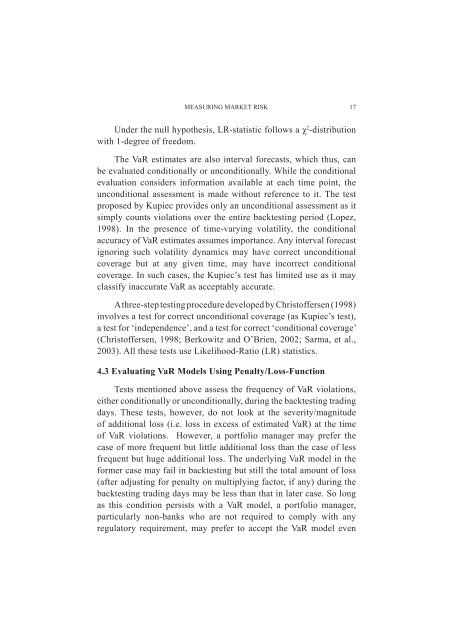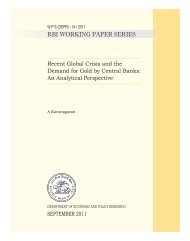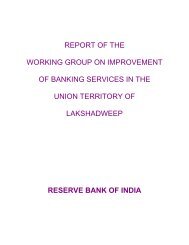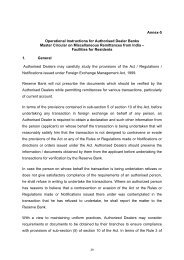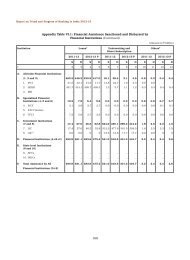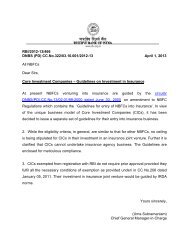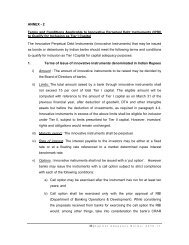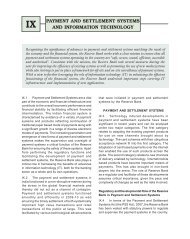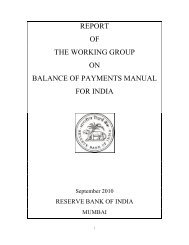Measuring Market Risk - Reserve Bank of India
Measuring Market Risk - Reserve Bank of India
Measuring Market Risk - Reserve Bank of India
You also want an ePaper? Increase the reach of your titles
YUMPU automatically turns print PDFs into web optimized ePapers that Google loves.
MEASURING MARKET RISK 17<br />
Under the null hypothesis, LR-statistic follows a χ 2 -distribution<br />
with 1-degree <strong>of</strong> freedom.<br />
The VaR estimates are also interval forecasts, which thus, can<br />
be evaluated conditionally or unconditionally. While the conditional<br />
evaluation considers information available at each time point, the<br />
unconditional assessment is made without reference to it. The test<br />
proposed by Kupiec provides only an unconditional assessment as it<br />
simply counts violations over the entire backtesting period (Lopez,<br />
1998). In the presence <strong>of</strong> time-varying volatility, the conditional<br />
accuracy <strong>of</strong> VaR estimates assumes importance. Any interval forecast<br />
ignoring such volatility dynamics may have correct unconditional<br />
coverage but at any given time, may have incorrect conditional<br />
coverage. In such cases, the Kupiec’s test has limited use as it may<br />
classify inaccurate VaR as acceptably accurate.<br />
A three-step testing procedure developed by Christ<strong>of</strong>fersen (1998)<br />
involves a test for correct unconditional coverage (as Kupiec’s test),<br />
a test for ‘independence’, and a test for correct ‘conditional coverage’<br />
(Christ<strong>of</strong>fersen, 1998; Berkowitz and O’Brien, 2002; Sarma, et al.,<br />
2003). All these tests use Likelihood-Ratio (LR) statistics.<br />
4.3 Evaluating VaR Models Using Penalty/Loss-Function<br />
Tests mentioned above assess the frequency <strong>of</strong> VaR violations,<br />
either conditionally or unconditionally, during the backtesting trading<br />
days. These tests, however, do not look at the severity/magnitude<br />
<strong>of</strong> additional loss (i.e. loss in excess <strong>of</strong> estimated VaR) at the time<br />
<strong>of</strong> VaR violations. However, a portfolio manager may prefer the<br />
case <strong>of</strong> more frequent but little additional loss than the case <strong>of</strong> less<br />
frequent but huge additional loss. The underlying VaR model in the<br />
former case may fail in backtesting but still the total amount <strong>of</strong> loss<br />
(after adjusting for penalty on multiplying factor, if any) during the<br />
backtesting trading days may be less than that in later case. So long<br />
as this condition persists with a VaR model, a portfolio manager,<br />
particularly non-banks who are not required to comply with any<br />
regulatory requirement, may prefer to accept the VaR model even


